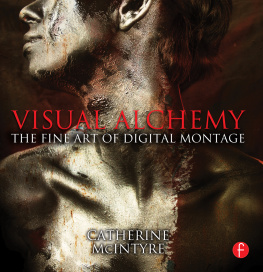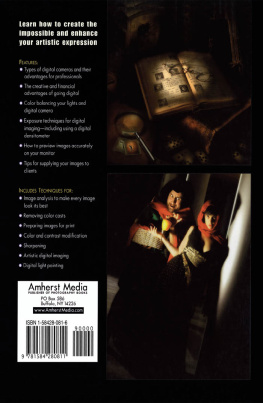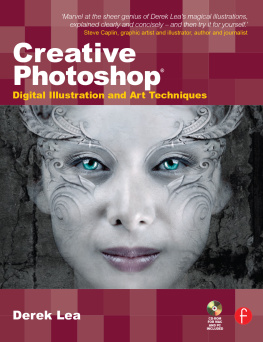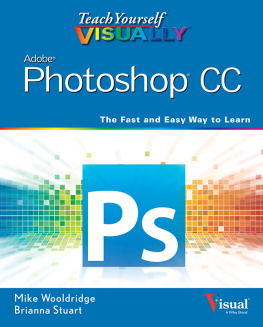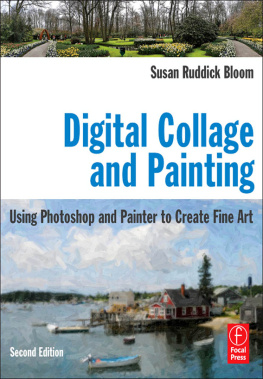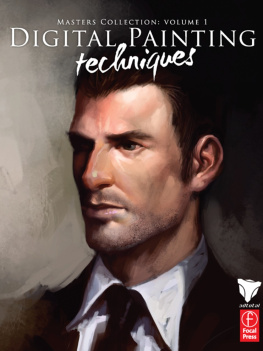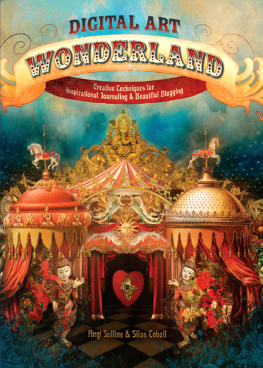
VISUAL ALCHEMY
VISUAL ALCHEMY
THE FINE ART OF DIGITAL MONTAGE
Catherine McIntyre

First published 2014
by Focal Press
70 Blanchard Road, Suite 402, Burlington, MA 01803
And by Focal Press
2 Park Square, Milton Park, Abingdon, Oxon OX14 4RN
Focal Press is an imprint of the Taylor & Francis Group, an informa business
2014 Catherine McIntyre
The right of Catherine McIntyre to be identified as author of this work has been asserted by her in accordance with sections 77 and 78 of the Copyright, Designs and Patents Act 1988.
All rights reserved. No part of this book may be reprinted or reproduced or utilised in any form or by any electronic, mechanical, or other means, now known or hereafter invented, including photocopying and recording, or in any information storage or retrieval system, without permission in writing from the publishers.
Notices
Knowledge and best practice in this field are constantly changing. As new research and experience broaden our understanding, changes in research methods, professional practices, or medical treatment may become necessary.
Practitioners and researchers must always rely on their own experience and knowledge in evaluating and using any information, methods, compounds, or experiments described herein. In using such information or methods they should be mindful of their own safety and the safety of others, including parties for whom they have a professional responsibility.
Product or corporate names may be trademarks or registered trademarks, and are used only for identification and explanation without intent to infringe.
Library of Congress Cataloging in Publication Data
McIntyre, Catherine.
Visual alchemy : the fine art of digital montage / Catherine McIntyre.
pages cm
ISBN 978-0-415-81657-1 (pbk.)
1. Photomontage. 2. Composition (Photography) 3. Photography, Digital techniques. I. Title.
TR685.M38 2013
778.8dc23
2013024826
ISBN: 978-0-415-81657-1 (pbk)
ISBN: 978-0-203-36200-6 (ebk)
Typeset by Alex Lazarou, Surbiton, UK
{ Contents }


Visual Alchemy is for people who, like me, want to make art. Whatever your aesthetic or technical background, I hope to inspire creative development and research by example as well as by suggestion, and help you to analyze and realize your own artistic ambitions.
I am a Scottish digital artist, and have been working in the medium for more than fifteen years now. I am often asked about the creative process, inspiration, and technique. This book explains my method and inspirations, in the hope that it will set you off on your own explorations.
I made traditional artdrawing, painting, sculpture and collagefor decades before approaching the digital, and still do from time to time. I apply the same decision-making processes to whichever medium I choose. These are the subject of the book. This is an aesthetic guide to composition, color, texture and all the other means of communication that an artist has at their disposal. It discusses the creative processthe part that comes after you have acquired the basic tools; its the exploration, and what to do with those tools. It is about ideas and how to express them, rather than the ins and outs of the software. You wont need too much in the way of kit. Any laptop or desktop computer will happily run Photoshop, or any of the other image manipulation programs; you probably have a camera on your phone. A basic working knowledge of Photoshop will be useful for the reader, but not essential, as the ideas will apply to any digital program, and indeed to any medium. Your most important tools are your eyes and brain. Start to look, and really to see. This book explains how to use the inspiration around you to make art.
Digital montage is still a brand new image-making tool. It is interesting that value judgments are often placed on Photoshop as a medium; no other means of making art are reduced and disregarded in popular perception in the same way (with the possible exception of the airbrush). Just as with photography until remarkably recently, in purist circles digital montage has yet to be accepted as a valid art medium. In August 2012, The Huffington Post reviewed an upcoming exhibition at the Metropolitan Museum of Art in New York called Faking It: Manipulated Photography Before Photoshop. The review suggests that In the good old days before air-brushing a zit or sharpening a blurred figure was just a mouse-click away, the task of transforming an image was an art form. I would argue that it still is. It has never been simple; the problems are simply different. The programs flexibility and versatility is almost held against it, for making things too easy; it is dismissed as being slick, even dishonest. This view does not do it, or its practitioners, justice. Working digitally is not somehow cheating. There is no magic button that makes a picture for you. A computer does no thinking. It simply a tool that allows artists to express themselves with more freedom than ever before. Photoshop allows transformations that were impossible in the darkroom, and makes others much easier; however, all the choice and potential it offers is actually a challenge. You can do anything, so you have to decide what to do.
Art has never been pure in the sense that the word is used about Photoshop. It is not a plain, simple reflection of the world, and it should not be. Art relays the world through the artists eye and brain, and translates, enhances, transforms. Painters and sculptors always did this. Traditional photographers do it too; by selection, dodging and burning, simple cropping, they are presenting the world as they see it. They are improving upon their raw material. If Photoshop can improve it furtherand it can!it is simply Luddite to ignore it. Method is not the product; the image is everything. There is now a growing digital art movement producing work that will, soon I hope, join film photography as a serious, eloquentand collectableart form.
I make pictures that I would like to see; no one else has made them yet, so its my job to find them. Its your job to give your own inner visions to the world. There is no one else who will do it quite like you. I hope this book will set you thinking, and help you along your own creative path. Good luck, and happy picture-making!
For Alistair
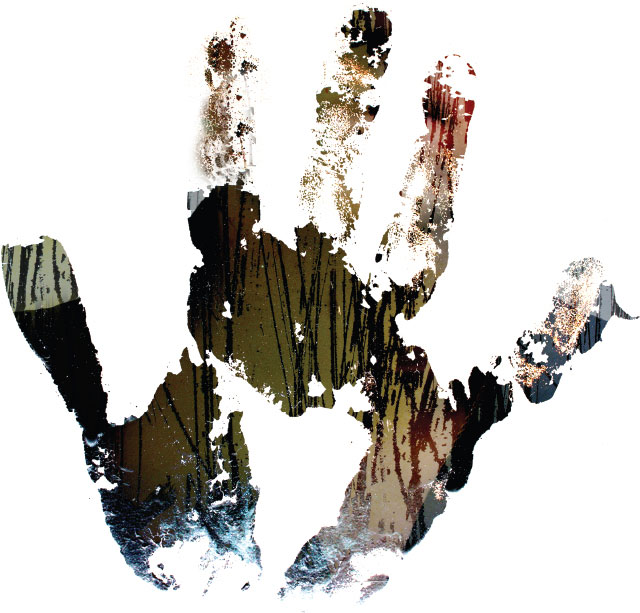
Digital manipulation must be the most exciting new medium to become available to artists since the invention of oil paints. Digital artists can make dreams visible, pin down their imaginings onto pieces of paper, depict the impossible, with a fine artists complete freedom. Combine this with photographys supposed realism, that persuades us that were looking at a version of the truth, and you have a very powerful medium indeed.
People take photographs for many reasons. They can simply capture events, the photographers experience of people and places. Seeming to preserve a version of a moment, to snatch a fragment of life from the stream of time, they make the subject in some small way immortal. Photography has become vital to everyone as an aid to, and a part of, memory. It almost persuades us that we can keep our pasts and take them with us into our futures. The thing almost everyone would rescue from that hypothetical house fire is their photograph album; this surely shows that to lose images of loved ones is in some sense to lose them. These photographs are connections, declarations of love and memorials.
Next page
